Birds of the DMZ
In late 2022 I learned that SAW CENTRE and the Korean Cultural Centre in Ottawa would be hosting an exhibition curated by the REAL DMZ PROJECT (RDP) of Seoul, South Korea. RDP is dedicated to an artistic examination of visible and invisible boundaries of the Korean border zone. Aware that the Korean Demilitarized Zone (DMZ) is one of the rare places on Earth where humans have been extricated and nature has flourished, I proposed to travel to the DMZ and bear witness to the birds and then create an artwork for the Negotiating Borders exhibition.
I travelled to the RDP residence in Yangji-ri, Cheorwon County, South Korea twice in 2023: once in September and once in December. Working with local guides and Birds Korea, I saw a total of 158 avian species and an estimated 11, 600 individual birds along the Border Zone.
I have now used my data and morphing software to create a piece entitled South and North Birds. I saw birds within the CCZ (Civilian Controlled Zone) in the South, within the DMZ (Demilitarized Zone), in the larger Border Zone, and, from a distance, within North Korea itself. Based on location, number, and frequency, an image of a single bird for each side was developed.
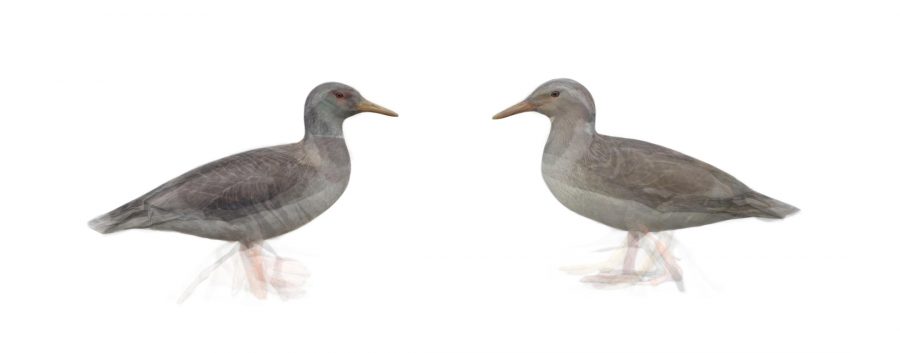
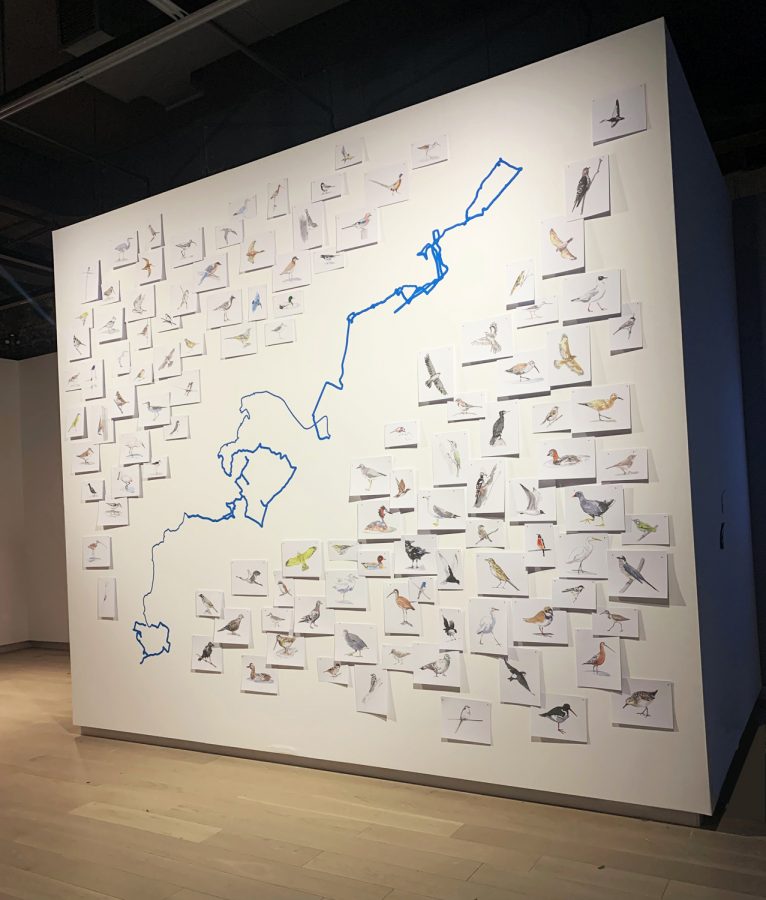
The artwork I created immediately upon my return from my first trip in September was entitled Trace. It is a graphical listing of the 115 bird species seen during my first trip and a line indicating my birdwatching paths along the perimeter of the DMZ. The installation provided an alternate perspective of this hair-trigger border, one based in the natural beauty of the area rather than the state of constant military threat.
Important to the project was painting a watercolour image of each bird seen. I needed a way of showing just how beautiful and fragile these birds are. Indeed, I needed to show the viewer just how beautiful I think these birds are and how perfectly each is evolved to its niche in nature. Today, some of these birds – the Red-crowned Crane, the White-backed Woodpecker, and the Hill Pigeons – are dependent on the quiet and solitude provided by the DMZ for their very existence.
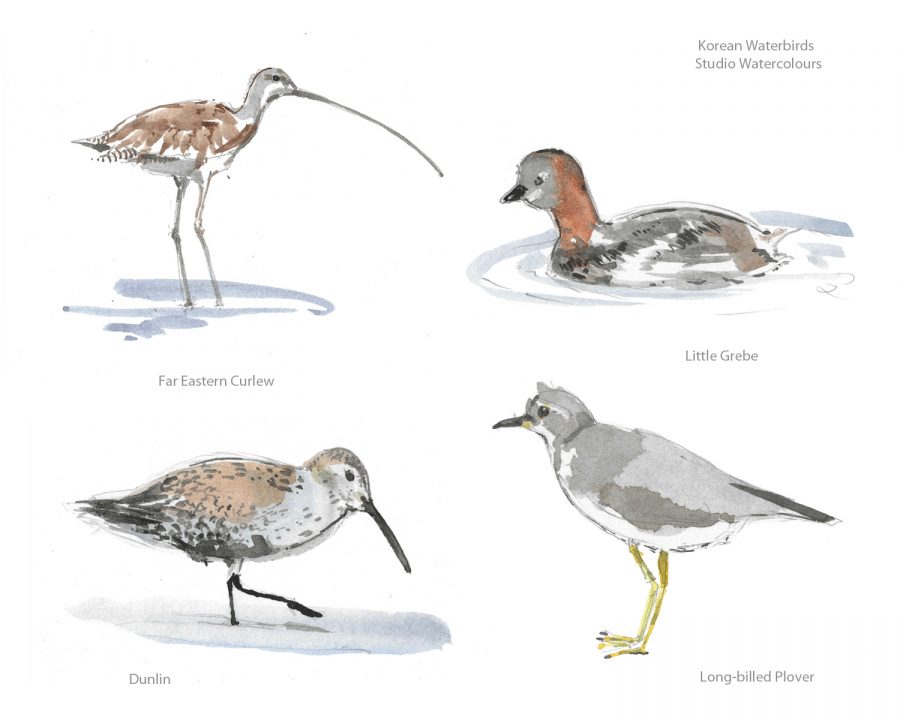
Watercolour painting imparts a sense of immediacy and delicacy. The inherent vagaries of the medium also helps to inform on the perceptual challenges of birdwatching and memory.
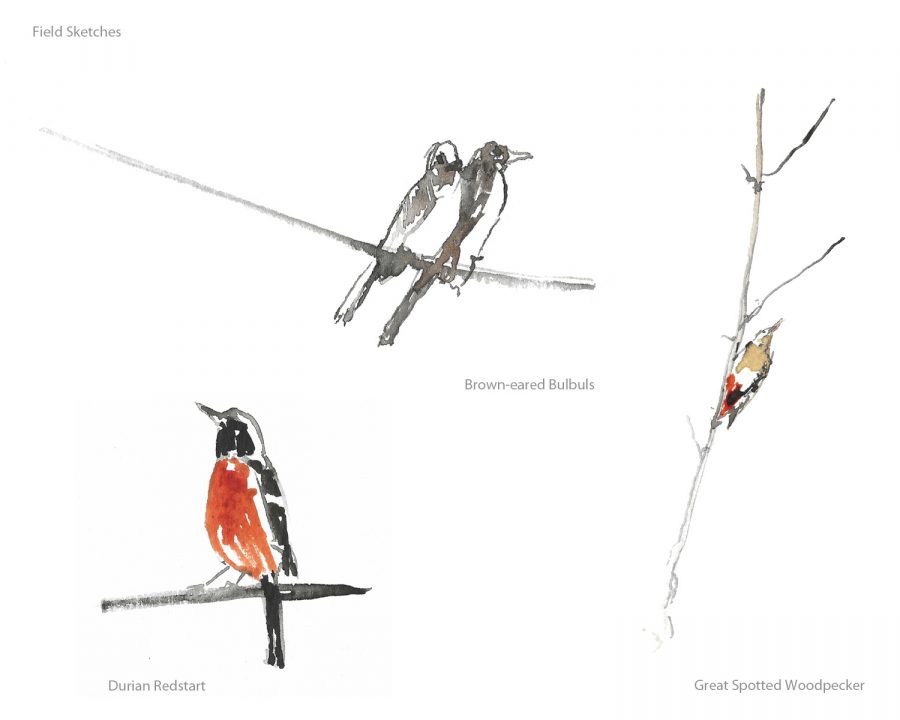
Sketching birds in the field is enormously difficult as they refuse stay still for more than a few seconds. I did try however and managed a number.
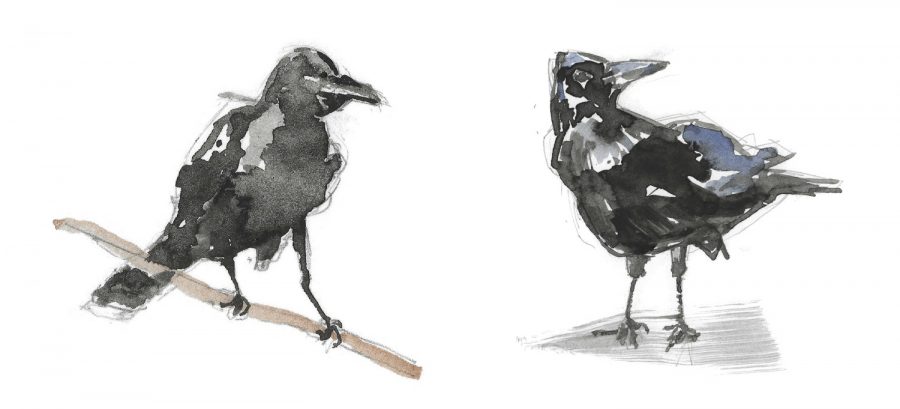
My hope is to continue working with my partners in Korea: the Real DMZ Project and Birds Korea. The tragedy and brutality of the Korean War is still raw and present along the border and I believe the birds can provide a visual and metaphorical link to this history.
Back